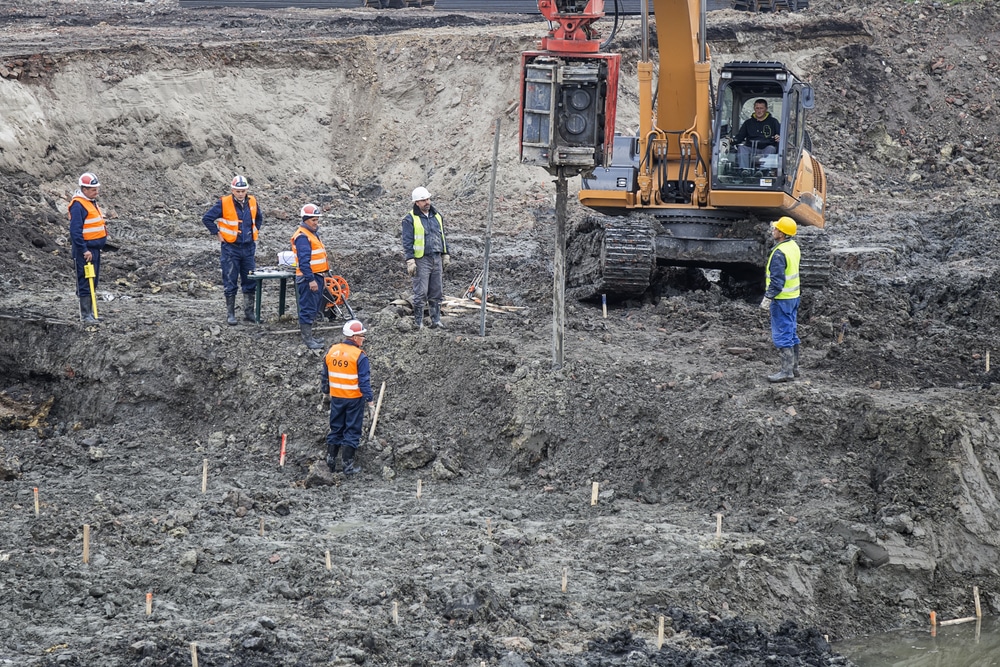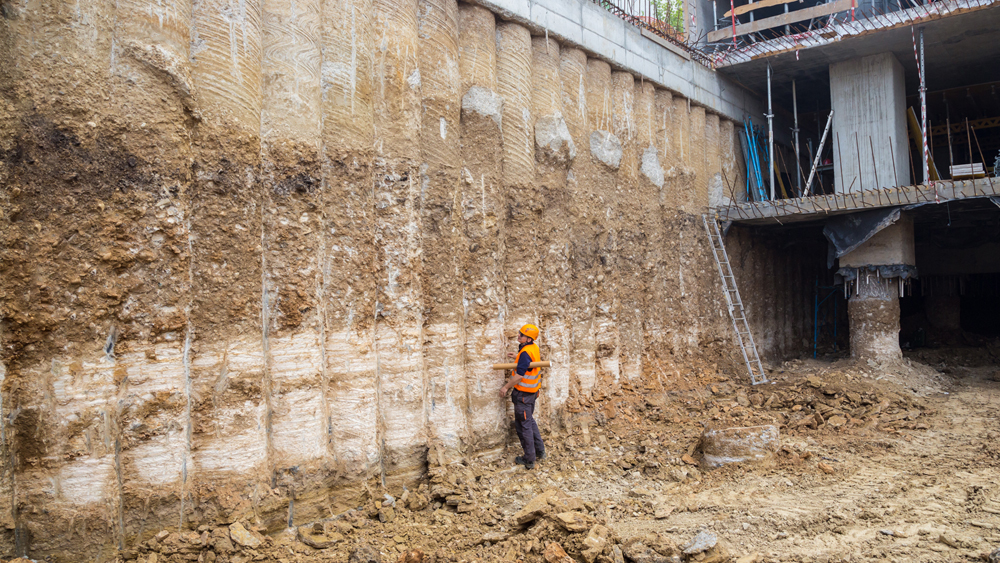Comprehensive Geotechnical Works to Guarantee Website Security
Comprehensive Geotechnical Works to Guarantee Website Security
Blog Article
Exactly How Consulting Engineers Enhance Geotechnical Engineering Projects: Insights Into Their Knowledge, Methods, and Collaborative Approaches
Consulting engineers are pivotal in improving geotechnical design projects, using their specialized expertise to navigate the complexities of subsurface problems. Their techniques include a range of website examination strategies, consisting of Criterion Infiltration Examinations (SPT) and Cone Penetration Tests (CPT), which educate vital decisions throughout the style and building and construction phases. Their collaborative techniques foster communication amongst diverse task stakeholders, inevitably shaping the task's trajectory. As we analyze the complex roles these experts play, it comes to be clear that their payments expand past technical expertise, triggering a closer consider the ramifications for project success.
Duty of Consulting Engineers
The proficiency of consulting designers in geotechnical design is fundamental to the effective execution of building and construction tasks. These experts play an essential function in analyzing dirt and rock residential properties, which are important aspects influencing design and building choices. By conducting complete website investigations, seeking advice from engineers accumulate crucial information that notifies the design process, ensuring jobs are developed on stable and appropriate ground.
Consulting engineers additionally provide indispensable insights right into threat administration (geotechnical geologist). They recognize possible geotechnical hazards, such as landslides, dirt liquefaction, and negotiation problems, enabling stakeholders to implement efficient reduction methods. Their knowledge aids in maximizing structure styles, which can lead to significant cost financial savings and enhanced safety
Additionally, getting in touch with engineers work as an important link between job proprietors, designers, and professionals. Their capacity to convert complex geotechnical information into workable recommendations cultivates collaboration and promotes informed decision-making throughout the project lifecycle. This multidisciplinary approach not only enhances task effectiveness but also ensures compliance with regulatory criteria and finest techniques.
Key Techniques in Geotechnical Design

One main methodology is website examination, which includes carrying out area tests and research laboratory evaluations to gather data on subsurface problems. Methods such as Requirement Penetration Screening (SPT) and Cone Infiltration Screening (CPT) are extensively used to review soil stratigraphy and toughness. Additionally, geophysical approaches, including seismic and electrical resistivity studies, give non-invasive ways to examine subsurface attributes.
One more important method is mathematical modeling, which makes it possible for designers to simulate different situations and anticipate how soil-structure communications will certainly behave under various loading problems. Limited Aspect Evaluation (FEA) is a typical approach employed in this context.
Moreover, the style of structures, preserving structures, and earthworks relies heavily on these approaches - geotechnical geologist. By incorporating sophisticated analytical devices with field data, consulting designers can develop tailored remedies that attend to specific job obstacles, eventually adding to the security and safety and security of building and construction tasks
Value of Dirt Evaluation
Soil analysis acts as a fundamental element in geotechnical engineering, providing necessary understandings right into the physical and chemical properties of soil required for efficient building preparation. Understanding soil characteristics is vital for identifying its load-bearing capacity, water drainage behavior, and possibility for negotiation or instability. Detailed dirt examinations, consisting of tasting and research laboratory screening, aid determine specifications such as soil type, moisture content, density, and shear strength.
These analyses notify the option of ideal building and construction techniques and products, inevitably affecting task safety and security and durability. For circumstances, cohesive dirts might require various foundation layouts compared to granular soils, requiring customized design services. Furthermore, dirt analysis help in recognizing impurities that might present threats to human find more information health and wellness or the setting, enabling for the advancement of mitigation methods.
Including soil analysis right into the beginning of project advancement aids to minimize unpredicted difficulties, guaranteeing that engineers can prepare for and deal with potential problems before they intensify. By developing a detailed understanding of the site problems, speaking with designers can enhance layout performance and decrease costs, thereby improving the total success of geotechnical engineering tasks.
Collective Strategies in Jobs
Successful geotechnical projects typically rest on collaborative techniques that bring with each other diverse experience from numerous self-controls. Efficient collaboration among getting in touch with designers, geologists, click now environmental scientists, and construction professionals is critical for resolving complicated obstacles and enhancing job results. By leveraging the distinct skills and expertise of each staff member, jobs can gain from an all natural understanding of the site problems, regulative requirements, and design restraints.
Normal interaction and interdisciplinary conferences facilitate the sharing of understandings and cultivate a society of teamwork. These joint initiatives enable the identification of prospective threats early in the project lifecycle, enabling prompt reduction methods. Moreover, including comments from stakeholders, consisting of local areas and governing agencies, ensures that all point of views are considered, improving task approval and conformity.
Additionally, the combination of sophisticated technologies, such as Geographic Info Solution (GIS) and Structure Details Modeling (BIM), more enhances cooperation. These tools enable for the real-time sharing of data and visualization of geotechnical problems, advertising educated decision-making. Inevitably, a joint method not only enhances project execution yet likewise lays the structure for cutting-edge options to intricate geotechnical engineering difficulties.
Effect On Job End Results

Consulting designers utilize innovative techniques such as threat analysis and predictive modeling, which improve the precision of task forecasts. Their capability to incorporate innovative technologies, like geotechnical instrumentation and data analytics, additionally fine-tunes the style and construction procedures. Therefore, jobs experience improved efficiency, reduced costs, look at more info and minimized hold-ups.
Additionally, cultivating effective interaction and collaboration amongst employee improves analytic abilities. When obstacles emerge, a joined front permits for swift recognition of options, protecting against potential obstacles. Inevitably, the collaborative efforts of consulting engineers add to better end results, making sure that projects meet both regulatory standards and customer assumptions.
Verdict

Report this page